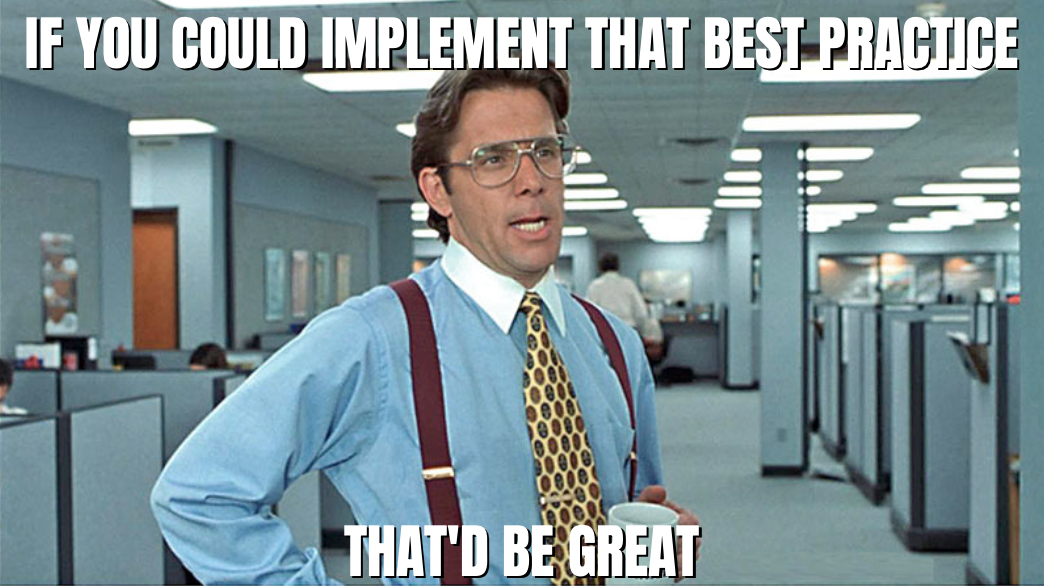Onboarding 101: How to boost employee retention
In the day and age of remote work
Do you want to increase employee retention?
Did you know that on average 1 in 6 new hires leave between the first week and the third month?
This has a lot to do with how successfully you onboard new employees. In a fiercely competitive market, it’s extremely important to find the right people and keep them for the long haul.
Increase employee retention, productivity, and engagement by improving your onboarding process. Keep reading to find out how.
You might also want to check out our last blog post where we show you how to optimize your sourcing efforts and hire the best front-end developers for your team.
Table of Contents
- What does onboarding mean?
- Why is onboarding important?
- What are the phases of onboarding?
- Challenges with remote onboarding
- Onboarding best practices
- Onboarding tools
What does onboarding mean?
Employee onboarding is the process of integrating new hires into your company culture and equipping them with the tools and knowledge to become a productive part of your team.
Don’t confuse onboarding with orientation. Orientation happens at the very beginning of a new employee joining the company. This is when they get introduced to the workplace, job responsibilities, company policy, and the team. And is part of the whole onboarding process.
While orientation is a one-time event to welcome new members joining your team, onboarding is a long-term strategic process that involves a series of events aiming to make the employee an integral part of the organization. Onboarding is more comprehensive and goes much further than orientation to fully engage new hires.
The onboarding process starts from extending a job offer and can last up to a year. There are conflicting views on how long onboarding should take. While some HR professionals say at least a year, others agree that a minimum of 3 months is enough.
Don’t get too caught up on the duration. This would depend on how well you planned and how efficient your onboarding process is as well as how quickly your new employee gets acclimated.
Focus on providing an effective onboarding experience to boost new employees’ confidence so they feel ready and motivated to excel at their job.
Why is onboarding important?

The main purpose of onboarding is to make new employees feel welcomed and fully prepared to perform their job duties through continuous guidance, training, feedback, and effective communication.
Let’s look at some numbers to factually showcase why onboarding is important.
Employees who feel they had a positive onboarding experience are more likely to stay with their employer in the long run. According to research by Brandon Hall Group , companies with solid onboarding programs can boost employee retention by 82% and productivity levels by 70%.
On the other hand, an ineffective onboarding process can lead to low employee engagement and high turnover. So you definitely don’t want to overlook it.
Having a good onboarding process in place creates workers that are more committed to the company and its success. It not only makes them more motivated to work towards company objectives, but also more likely to recommend your organization to other prospective candidates.
Employee referrals are one of the most effective ways to attract and recruit new talent. It saves you time from hiring and resources you would otherwise spend advertising job offers. A proper onboarding process can turn employees into company advocates who would recommend you as an employer of choice to friends and family.
But there is room for improvement.
A survey by Digitate revealed that 1 in 5 new hires are unlikely to recommend their organization to their network after completing the onboarding process. This means that most companies have work to do when it comes to onboarding.
Be one step ahead of your competition and create a top-notch onboarding experience to attract the best talent on the market. Let’s get down to the nitty-gritty.
What are the phases of onboarding?
There are generally 4 phases in an effective onboarding program:
- Pre-onboarding
This is the first stage of the onboarding process and it happens after the candidate accepts the job offer until their first working day. It involves extending an offer letter, negotiating salary and benefits, and going over the employment contract. You should also plan in advance their first day. It’s important to address any concerns that they may have and communicate clearly what’s expected of them so they are prepared and feel at ease.
- Orientation
The actual onboarding process for your new employee begins on their first day of work. This is when you would finalise the paperwork, discuss topics such as time off and payroll policies and go over the tools and software the employee will use on a day-to-day basis. Formalities aside, during orientation, the new employee should get a feel of your company culture and how you work as a team. At All Front, we always organise a team meeting within the first week to give everyone an informal chance to introduce themselves.
- First Tasks and Training
Once orientation is over, it’s time to assign the first task and begin the training. No matter how experienced your new employee is, having them work on a relatively easy and non-demanding project not only gives them an idea of what the process is but also helps you understand how they approach a task. Taking enough time to prepare and train new employees increases satisfaction by showing them that you care about their professional development and success.
- Ongoing Support
Once the employee successfully completes their first task and training, it’s time to transition from the status of a newbie to a valuable member of the team. However, this doesn’t mean you should stop supporting your new employee. On the contrary, providing continuous support and feedback as well as conducting regular performance reviews will make that transition easier and help the employee feel more confident in their new role.
Challenges with remote onboarding
We have to finally come to terms that remote work is the new “normal”. While working from the comfort of your home has its benefits, it definitely lacks social interaction. This can make employees feel isolated and lonely .
This is why remote onboarding requires more care and attention. If you can’t rely on face-to-face communication, how can you create a welcoming environment for new employees?
Let’s go over some of the challenges that employees face during a remote onboarding process so you are well-equipped to tackle them:
- Setting up new tools and software
Your new employee needs to be able to access their corporate accounts on the first day. Setting up logins and passwords sounds like a straightforward process, but if there are multiple people involved who need to give access to the shared workspace, this process can be further delayed when done remotely. Make sure to walk new employees through the tools they will use on a daily basis. No matter how user-friendly the software is, don’t just assume that they would know or figure out the most effective and efficient way to make use of it.
- Team coordination
When you are part of a remote team, coordination can become difficult. If people work from multiple locations, there might be different time zones that you need to account for. You should also consider employees’ individual habits and cultural differences that can hinder the flow of the team. Avoid possible misunderstandings and miscommunication by having clear lines of communication such as virtual daily or weekly stand-ups.
- Feelings of isolation
Probably one of the things that are inevitable when working from home is feelings of loneliness and isolation. While you might not be able to virtually replicate a standard office environment, there are things you can do to build relationships and encourage feelings of belonging. And we will show you how in the next section.
- Employees’ personal needs
With the shift to working from home, many employees have to balance their work and personal commitments. You should strive to create an environment where employees feel supported and comfortable communicating their situation, and provide support based on their personal needs.
Onboarding best practices

By now, you know the basics for creating a solid onboarding program for your new staff. In this section, we’ll go over the best tips and tricks to help you turn it from simply good to an outstanding experience. Even virtually.
- Assigning a mentor
Starting a new job can be nerve-wracking. Most new employees find themselves hesitant to reach out when they experience issues — either because they don’t know the right person to approach or because they fear they might ask a stupid question. When you work from home, you can’t turn to colleagues who sit beside you for help. By assigning a mentor or a “work buddy” from day one, you will help your new employee not only have a point of contact for everything work-related but also feel less isolated by having a person to chat or have a virtual coffee break with.
- Getting everyone involved
When you have a new employee joining, it’s a good idea to get all team members involved. Ask each to send a quick welcoming message. It feels more personal than just a team meeting where everyone is obliged to attend anyways. It also creates an opportunity for team members to get talking once introductions are out of the way.
- Organising regular 1-to-1 meetings
Starting a new job can definitely be confusing at first, even more so from home. Checking in regularly with your new employee to see how they’re getting on is important in creating a safe space for asking questions and providing feedback.
- Setting clear expectations
An important part of the onboarding process is to understand what your new employees’ goals are and align these with the overall company mission. In the beginning, make sure to clearly communicate what your expectations are and set an actionable plan the employee can work towards to achieve their goals. You can then periodically discuss performance during 1-to-1s.
- Listen to your employees
In the end, you can get the opinion of new employees on the onboarding process. Ask for their feedback on what they thought worked well and what might need improvement. You can either do that with a short survey or ask openly in a 1-to-1 meeting. Gathering employee feedback will help you gradually improve the onboarding process for future newcomers.
Onboarding tools
If you think that onboarding remote employees is a tough task, you are right. Luckily, there are tools that you can use to simplify the process, make your life easier, and still create nothing short of an amazing onboarding experience for your new employees.
We recommend that you use an electronic signature app such as DocuSign for employment documentation to save time, effort, and resources from printing and sending paper versions.
At All Front, we use Google Workspace to store and collaboratively work on documents as well as to conduct team meetings, Slack — for quick messaging, sharing company updates, and keeping in touch, Jira — for assigning tasks and tracking project progress.
There are also dedicated HR software tools such as BambooHR . If you’re planning to hire and onboard multiple people in a short time, it might make it easier for you to plan and manage the workflow.
Final Thoughts
It’s true that virtual onboarding can be trickier and more challenging than the in-office one. Thankfully, nowadays we have an arsenal of resources at our disposal.
If you fully utilise available technology, consistently check-in, and provide support to a new joiner as well as prepare and plan ahead, you can overcome the challenges of virtual onboarding.
As you come to the end of this guide, we hope you learned something new and feel better prepared to create a positive onboarding experience for employees.
What was your favourite tip that you’ll implement? Do you have anything to add?
Let us know by leaving a quick comment below.




